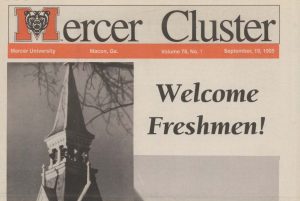This year, the Digital Library of Georgia will be adding a variety of new newspaper titles to the Georgia Historic Newspapers (GHN) website (https://gahistoricnewspapers.galileo.usg.edu/). Below is the list of titles currently slated to be added to GHN in the Summer and Fall of 2025.
Title funded by the Charter Foundation of Valley, Alabama and the Chipley Historical Center of Pine Mountain
Harris County Journal (Hamilton), 1920-1953
Title funded by the Chattooga County Historical Society
Summerville News, 1971
Title funded by Jack Tarver Library, Mercer University
Mercer Cluster (Macon), 1990-2022
Title digitized in partnership with the Kennesaw State University Museums, Archives and Rare Books
Southern Voice (Atlanta), 1998-1999
Titles funded by the National Digital Newspaper Program with a grant from the National Endowment for the Humanities
Atlanta Daily World, 1955-1963
Augusta Courier, 1946-1963
Colored Tribune (Savannah), 1875
Savannah Tribune, 1876-1943
Title funded by a donation from the Oconee Historical Society
Oconee Enterprise (Watkinsville), 1925-1977
Title funded by the Newton County Library System
Covington News, 1969-1977
Title funded by the Wilkinson County Historical Society with a grant from the Oconee EMC Foundation
Wilkinson County News (Irwinton), 1925, 1937-1988
Titles made available as part of UGA’s Libraries Digital Newspaper Preservation Project
Baldwin Bulletin (Milledgeville), 2017-2024
Eatonton Messenger, 2015-2024
Jones County News (Gray), 2015-2024
Lake Oconee News (Greensboro), 2015-2024
Walker County Messenger (LaFayette), 2020-2024



